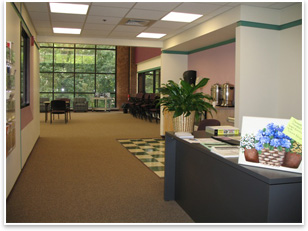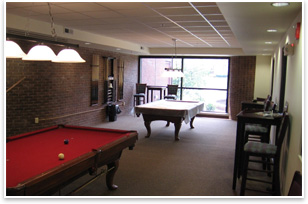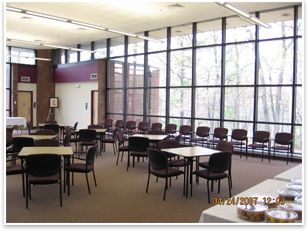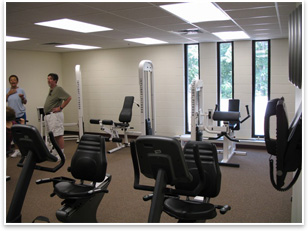
| Library Given New Life as Senior Center Adaptive reuse doubles space and divides functions How do you . . . accommodate a growing population of seniors and spruce up an underused town facility at the same time? Summary: Anticipating the needs of its aging population, the city of Odenton, Md., retained the Arlington, Va.-based firm The Lukmire Partnership to transform its former library into the newest senior center in Anne Arundel County, Md.. The firm was an easy choice for the county, says Jim Cox, AIA, partner in charge. Not only does the firm have a standing contract with the Anne Arundel County Department of Public Works, but the firm’s Annapolis office also recently completed the county’s new West County Library. Dedicated as the Catherine L. O’Malley Senior Activity Center Annex, the 6,800-square-foot facility was designed to accommodate the needs of a growing senior population, offering health, recreational, and social opportunities.
County officials decided that the best solution lay in converting the former library into a facility for seniors in anticipation of demographers’ prediction of a major boom in the number of seniors in the county. By 2030, Odenton’s over-60 population is expected to increase 83 percent over the 2005 population, state Department of Aging figures predict. Cox believes that this number may even be conservative. Citing the increase in high-density assisted living facilities in this Washington, D.C., suburban area, Cox says that the increase is happening faster than Department of Aging estimates. Even at present population levels, the O’Malley Senior Center serves between 400-500 seniors per month.
The late 1960s building has a brick façade with large glazed openings. Because many of the residents felt that they grew up with the library building, it has a strong community identity. “It was part of the neighborhood that we didn’t want to mess with,” explains Cox. “We didn’t wish to change that façade, so we cleaned it up, added an entrance canopy, and that was about the extent of the exterior renovations. We primarily focused on in-work.” Cox adds that although there was no LEED™ certification requirement for this particular project, Lukmire used similar materials in the renovation to what was specified for the LEED-certified West County Library. |
||
Copyright 2007 The American Institute of Architects. All rights reserved. Home Page |
||
news headlines
practice
business
design
recent related
› Innovation in Design for Aging Requires Shared Vision
› Lessons from the Latest Design for Aging Review
For information on the AIA Design for Aging Knowledge Community, which is now accepting submissions for the ninth edition of the Design for Aging Review, visit their Web site.
For more information on the latest Design for Aging Review, visit the AIA Book Store.
For more information on Design for Aging: Post-Occupancy Evaluations visit the AIA Book Store.




